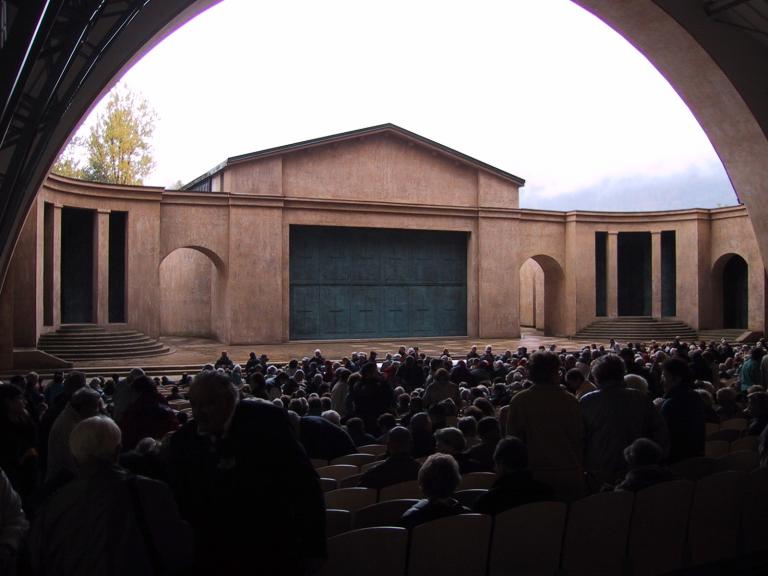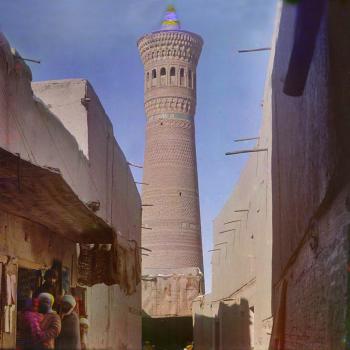
I published the article below in the Deseret News on 8 June 2018. Next year, I will be leading a tour for the Cruise Lady company next year to Oberammergau and adjacent sites — as will Jack Welch, Brad Wilcox, and Roger Minert. Mine will be the longest of the tours, but also (alas!) the most expensive:
Without treatment, the bubonic plague — which is spread mainly by infected fleas carried by small rodents — kills between 40 and 60 percent of its victims, and sometimes even more.
When it swept through Europe, Asia and Africa as the notorious Black Death in the mid-14th century, no really effective treatment for it was known — and somewhere between a quarter and two-thirds of the population of Europe died. Altogether, the entire population of the world may have dropped from an estimated 450 million to around 350-375 million. Some estimates, in fact, put the global death toll as high as 200 million.
In this May 10, 2010 file photo Andreas Richter as Jesus, center on donkey, performs with laymen during a dress rehearsal of the passion plays 2010 in the theatre of Oberammergau, southern Germany. More than 2,000 citizens of this Bavarian village participate in the century-old play of the suffering of Christ, staged every 10 years and dating back to 1634.
Over the next several generations, the disease was a recurrent and terrifying visitor to Europe. During 18 horrific months in 1665 and 1666, for example, approximately a quarter of the population of the English capital died as a result of the Great Plague of London.
Thus it’s scarcely surprising that, when the plague appeared in the southern German duchy of Bavaria in 1632, widespread concern and even panic ensued. In 1634, the disease killed approximately 15,000 residents in Bavaria’s capital, Munich. (That may have been a majority of Munich’s population.)
Between a returning resident of the Bavarian village of Oberammergau inadvertently bringing the disease into his hometown that same year, soon dying of it, and other villagers becoming infected with the plague and dying from its effects, the little town was desperate. Nearly every family in the village had lost at least one victim, and some families had been essentially wiped out. Now facing the plague on top of the already massive casualties of the devastating Thirty Years’ War (1618-1648), Oberammergau’s very survival was at risk.
Thus arose its famous Passion play.
Laymen perform during a dress rehearsal of the passion play 2010 in the theatre of Oberammergau, southern Germany, Monday, May 10, 2010. More than 2,000 citizens of this Bavarian village participate in the century-old play of the suffering of Christ, staged every 10 years and dating back to 1634.
The villagers of Oberammergau collectively vowed to God that, if he would spare them from the plague, they would faithfully perform a play every 10 years commemorating and recounting the last days of Jesus. Their vow, say the chronicles, was heard. Miraculously, the epidemic failed to claim a single additional victim, and all of those who had been suffering from the plague recovered.
Since the original “Passionsspiele” in 1634, the Oberammergau Passion play has come to be presented in years ending with a zero — that is, once each decade. There have been some exceptions. No staging occurred in 1940, for instance, because of the outbreak of World War II. And a special performance season occurred in 1934, marking the 300th anniversary of the tradition’s debut. Another special season was staged in 1984, celebrating the 350th anniversary of the first performance.
What is a Passion play? The Late Latin word “passionem” means “suffering” or “enduring.” Thus, a Passion play is a kind of Easter pageant, a dramatic depiction of the Passion of Jesus focused primarily upon his trial and upon his suffering and eventual death on the cross — and, to the surprise of some, only secondarily upon his ultimate triumph and resurrection. Such plays have long been common in Catholic areas of Europe during the days of Lent, leading up to Easter Sunday.
Nearly 2,000 actors, singers, musicians and technicians, all residents of the small village of Oberammergau — which has roughly 5,200 inhabitants — participate directly in the decennial effort. (In order to take part, a person must either have been born in the village or have lived in it for a minimum of 20 years.) For six hours each performance day, punctuated by dinner, local shopkeepers and tradesmen cease to be Bavarians and become, instead, first-century Palestinian Jews and ancient Roman soldiers. And hundreds of thousands of people come from all around the world to watch.
In this May 10, 2010 file photo Andreas Richter as Jesus, center, performs with laymen during a dress rehearsal of the passion plays 2010 in the theatre of Oberammergau, southern Germany. More than 2000 citizens of this Bavarian village participate in the century-old play of the suffering of Christ, staged every 10 years and dating back to 1634.
Otherwise, the quaint, pretty little Alpine town, located just 12 miles north of the famous ski resort and 1936 Winter Olympic venue Garmisch-Partenkirchen and not far from the Austrian border, is best known for its fine woodcarving and for the colorful fresco paintings that decorate many of its chalets and other buildings.
Much has changed in Europe generally and in Germany in particular since 1634. The pious Catholic faith of early 17th-century Bavaria no longer enjoys the largely unquestioned devotion that it once did. Through all the wars and other stresses of the intervening centuries, though, the Oberammergau Passion play remains. Its next performances will begin on May 16, 2020, continuing through Oct. 4, 2020. They will constitute the 42nd season of a tradition that is now nearing the end of its fourth century.












